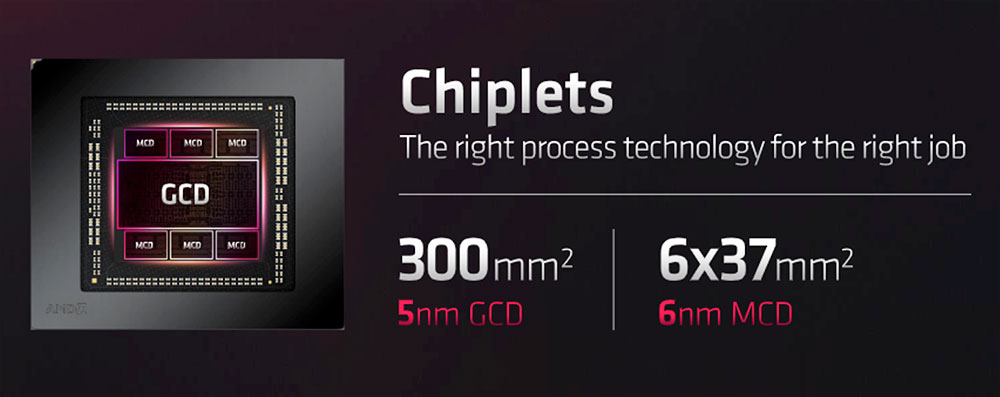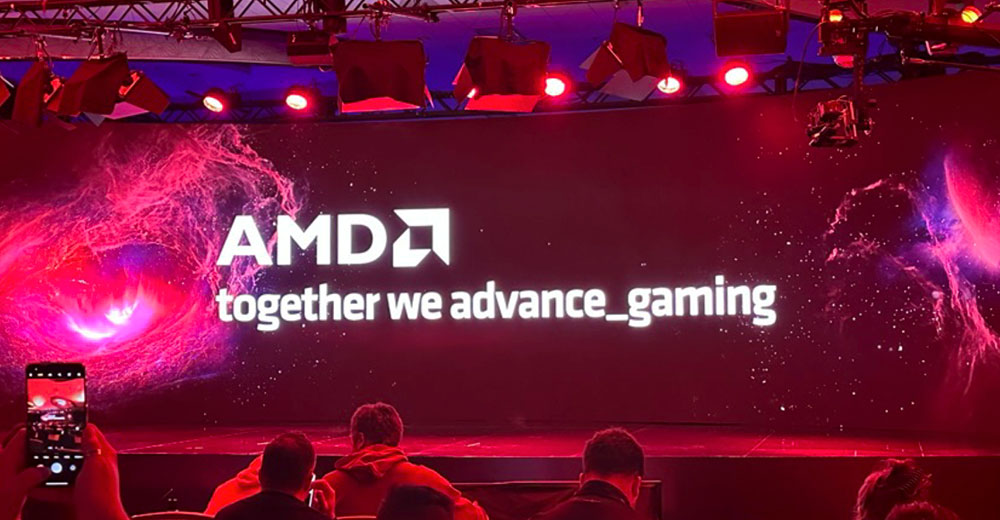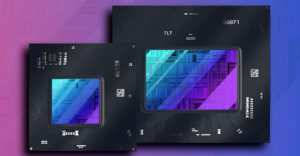AMD, on Nov. 3 in Las Vegas, held a launch event to take the wrappers off its next-generation desktop graphics family. The event was a refreshingly brief but powerful overview of the innovation that AMD continues to bring to the graphics space.
In a bizarre but fascinating manner, it was interesting to see that much of the ho-hum or negative pre-launch rumor mill feedback, delivered by the leaker paparazzi, was off base as these pundits didn’t have access to the post-launch data.
What AMD announced was truly striking and impressive in several ways. It’s also a testament to how AMD’s return to silicon glory, primarily due to the stewardship of CEO Lisa Su, has turned the company into an execution juggernaut since her arrival in October 2014, only eight years ago. It’s worth pointing out what I believe are the three biggest takeaways from AMD’s announcement.
Takeaway #1: RDNA 3 is a remarkable opportunity for AMD to disrupt the graphics space.
If AMD’s performance claims are to be believed — and industry benchmark experts will be the judges over the coming weeks — RDNA 3 will potentially disrupt Nvidia’s 80% share in the desktop graphics space.
Recall that AMD’s claims that RDNA 3 delivers an additional 50% to 70% of performance improvement are what Nvidia accomplished with its RTX 4090.
More importantly, RDNA 3 is the first actualization of AMD’s “chiplet” design ability in the graphics arena. The chiplet approach, which enabled AMD to turn its Ryzen processor family into a highly capable and more affordable offering against Intel’s processors, consists of a 5nm compute processor that rests on an interposer with six memory cache dies at 6nm and intrinsically reduces cost.

RDNA 3 chiplets process overview (Image Credit: AMD)
Admittedly, this tactic tends to come at the expense of clock speeds and overall pure performance at the silicon level. But the more significant point is while the architecture facilitates a 2.3GHz core clock speed that is only marginally faster than RDNA 2, this design technique is groundbreaking in the graphics space, and the potential for future products that will dramatically scale has gamers chomping at the bit.
Truth be told, beyond the messaging about AMD’s pioneering chiplet design, RDNA 3 might be viewed as a fine-tuning of RDNA 2. In other words, AMD is bringing more compute power to the table with RDNA 3, but the compute units appear remarkably similar to the company’s prior generations of graphics architectures.
Still, that doesn’t diminish what AMD has achieved with RDNA 3. The silicon game is about reducing die size to reduce costs and lower system wattage requirements, and RDNA 3 has all of that in spades.
Takeaway #2: RDNA 3 will flip Nvidia on its head when it comes to pricing.
Anyone who has covered the PC gaming space knows the winners tend to be those companies that can offer a compelling value proposition blend of performance and competitive pricing. Value has always been a powerful component of AMD’s brand DNA, so RDNA 3 represents an ample opportunity to disrupt things in the graphics space.
After all, Nvidia’s premium “founder’s” offering — such as its forthcoming RTX 4090 with 24 GB of GDDR6X VRAM — is priced loftily at $1,599. AMD shook up the audience by announcing the pricing of its new flagship cards, the Radeon RX 7900 XTX and Radeon RX 7900 XT, at less than $1,000 each ($999 and $899, respectively).
To be sure, the company positioned its new graphics cards at the event against Nvidia’s “mid-range” RTX 4080 (which carries a healthy $1,199 MSRP), presumably because AMD feels that that’s the right disruption point to drive meaningful volume. In my view, that’s a wise marketing move for AMD since if the benchmark data bears out, the company can make considerable traction penetrating Nvidia’s wheelhouse.
Another point deserves mention. Nvidia’s RTX 4XXX cards have always suffered a reputation, with some gamers, as being simply too large and requiring a power supply upgrade. AMD’s new cards require only two eight-pin inputs because their power requirements are less thirsty than the latest Nvidia cards.
This observation begs the question of whether the RDNA 3 architecture can scale and be used with larger power supplies and even greater performance. But the tale of the tape will be the initial reviews that will assess just how efficient these new AMD cards are.
Takeaway #3: AMD Advantage could be a game changer for “DIY wannabes.”
As the marketing executive who launched Dell’s XPS gaming brand in the early 2000s to take on the likes of Alienware (before Dell acquired them), I can speak to the joy and sense of accomplishment in building numerous gaming rigs over the past several years.
However, I can testify that building a gaming PC is not for the faint of heart. Despite the thrill of picking my desired precise components (e.g., motherboard, processor, graphics card, chassis, power supply, etc.), I always found myself frustrated with the actual construction of a DIY setup.
Amusingly, I always had remaining parts and screws I somehow didn’t utilize, and my cable management skills were less than elegant. What’s more, don’t get me started about how a DIY system can be a nightmare to upgrade from a firmware and driver standpoint because so many disparate components are involved.
AMD Advantage hopes to solve that. The company is using its considerable expertise and know-how, culled from extensive research, to offer what it calls “user-centric” systems that have all the benefits of a DIY system without the hassle I’ve described.
To be clear, AMD is not entering the complete system PC business. Replicating the approach it has successfully taken with AMD Advantage laptops, AMD Advantage is a “framework” program that essentially certifies desktop systems from leading system integration partners.
These certified desktop PCs will be optimized for use with AMD’s top-of-the-line Ryzen 7950x processors and Radeon XTX 7900 graphics cards. AMD’s Adrenalin Software will deliver elevated performance and manage firmware/driver updates. But most importantly, these certified systems will be designed in a highly customizable manner that should make PC upgrades painless and more future-proofed.
The new AMD Advantage desktop systems are expected to be available soon from CSL, CyberPower, eBuyer, Falcon, Northwest, Maingear, Origin PC, and Xidax.
Analyst Comments
There’s a lot to like in what AMD announced at this event. While overall PC market growth is rapidly slowing after a two-year Covid-19 binge, AMD’s new graphics cards have the potential to drive growth in the PC gaming segment.
Furthermore, the AMD Advantage program could expand the market with “DIY wannabes” who dreamed about building their own PC but didn’t have the time or technical skills to do it.
While the PC gaming space doesn’t have a natural launch cadence catalyst that is driven as the consumer PC market had in the late 1990s and early 2000s when a launch of a new Windows operating system could ignite sales, other factors could drive growth.
Highly anticipated new games in 2023, such as Alan Wake 2, Aliens: Dark Descent, Ark 2, Assassin’s Creed: Mirage, and Atlas Fallen, could have an adrenalin-like effect on gaming PC sales, as 2022 was not a very exciting year for breakthrough games.
Although AMD’s graphics market share might be in the 20% range, AMD PC gaming enthusiasts are among the most animated and energetic PC users I’ve encountered. My interviews with several AMD executives at the RDNA 3 event personified much of that liveliness.
I was particularly taken by my brief discussion with HipHopGamer, a YouTube influencer who channeled the gamers’ excitement in attendance at the event. Word of mouth about these graphics cards should be strong. You can witness for yourself HipHopGamer’s exuberance and watch my other interviews with the AMD execs in this video:
While it’s difficult to assess the impact of these new AMD graphics cards until industry benchmarking experts weigh in on how these solutions compare to Nvidia’s offerings, credit AMD with keeping its innovation pedal to the metal, which should keep Nvidia on its toes.
Designed to power high frame rate 4K and higher resolution gaming via its innovative chiplet implementation and second-generation ray-tracing capability, AMD’s RDNA 3-based graphics cards will enable developers to bring immersive games to market that we could not have contemplated just a few years ago.
Even creative professionals who make a living producing high-caliber digital video and multimedia content will see the possibilities with these new solutions. It’s a powerful message that I’d like to see AMD apply more marketing emphasis.
























































